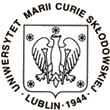

 |
 |
 |
|
Wladyslaw J. Swiatecki
LBNL, Berkeley The Physics of Nucleus-Nucleus FusionThe cross-section for the production of a very heavy nucleus in the collision of two nuclei is considered to be the product of three factors: The cross-section for the two nuclei to stick, the prbability for the resulting composite system to overcome, by diffusion, the saddle-point separating it from the compound nucleus configuration, and the probablity for the excited compound nucleus to survive fission. The first and third factors are treated using (somewhat refined) standard methods, and the second by solving the Smoluchowski diffusion equation in a potential in the form of an inverted parabola, adjusted to represent the macroscopic deformation energy of the composite nucleus after contact of the target and projectile, and the formation of a neck between them. Eight one-neutron-out reactions have been chosen for a detailed investigation, corresponding to the study of elements with atomic numbers Z = 102 - 118 in bombardements of 208Pb with projectiles ranging from 48Ca to 86Kr. The centroids and widths of the measured excitation functions are readily accounted for without the adjustment of any parameters. The absolute values of the cross-sections can be reproduced by making an assumption about the surface separation of target and projectile at the moment of sticking.
| ||
Last modificated: 2003-09-22

